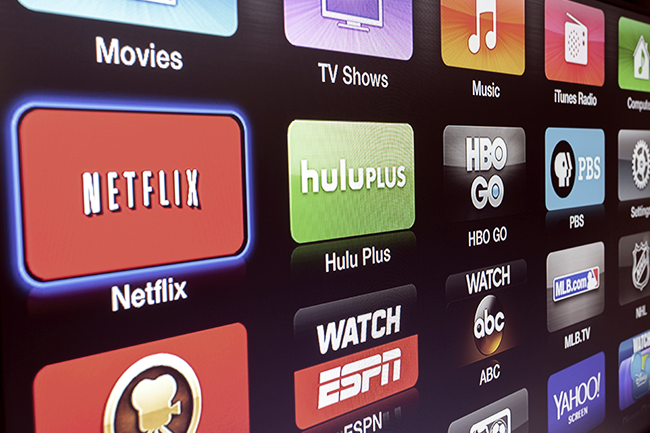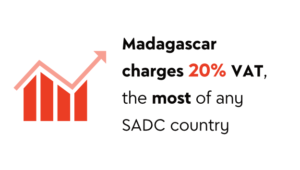In the past, when global market analysts talked about music, movies, TV and video games, sub-Saharan Africa didn’t really get much airtime. Showbiz? For many years, the continent’s entertainment industry was more like ‘slowbiz’… until it all got plugged in, wired up and digitised.
It’s easy to overstate the impact of Africa’s digital boom. In January 2015, analyst We Are Social published data reporting the regional internet penetration figures for the world’s major markets. North America had 88% penetration. Western Europe was sitting at 81%. Oceania (69%), Eastern Europe (58%), South America (56%)… Down and down it went, until, in last place, with the second-lowest levels of internet use, was Africa, with a mere 26%. Only South Asia (19%) had less.
But where some see the glass as three-quarters empty, others see a massive untapped market. In the digital space, when we say ‘others’, we mean global media giants such as Facebook and Naspers.
When Facebook opened its first office in Africa in Johannesburg in June, its active user population had grown to 120 million, with the vast majority – more than 90% – using mobile devices to access their profiles on the social network. ‘Mobile is not a trend; it’s the fastest adoption of disruptive technology in the history of communication,’ Nunu Ntshingila, Facebook’s head of Africa, said in a statement.
That disruption is being felt across Africa’s entertainment and media (E&M) sector, with the continent’s three key markets all forecast to report huge growth in the near future. In the fifth edition of PwC’s Entertainment and Media Outlook (September 2014), the revenue from Nigeria’s E&M industries was forecast to grow at a compound annual growth rate (CAGR) of 16.1% from US$4 billion in 2013 to US$8.5 billion in 2018. In Kenya, E&M revenues were expected to grow from US$1.7 billion in 2013 to US$3.1 billion in 2018, at a CAGR of 13.4%. And in South Africa, the E&M sector was forecast to grow at a CAGR of 10.2% from ZAR117.1 billion in 2013 to ZAR190.4 billion in 2018.
Although South Africa’s predicted CAGR is lower than Nigeria and Kenya’s, it is working off a far higher base. Across all three countries, internet access – and mobile in particular – is considered the driving force behind that projected growth.
In a related report, PwC singled out Kenya’s capital as one of the world’s biggest entertainment hubs. ‘It is an indication of Nairobi’s dynamic development, and that of many other African cities, that its companies and consumers have the highest rate of growth in entertainment and media spending of any other city in the world among the 30 covered in PwC’s recent study,’ the report stated. ‘Another of our African cities of opportunity, Johannesburg, comes in third in global entertainment and media spending, just behind Beijing and Mumbai – and ahead of Shanghai.’
Lagos might have a thing or two to say about that. Nigeria’s biggest city is steadily emerging as a digital gaming hub, with local online gaming company Kuluya already producing more than 70 games for the global market. ‘In Africa, we have a lot of downloads from Ghana, Kenya and South Africa,’ Kuluya’s lead developer Olakunle Ogungbamila told BDLive. ‘There was a particular game that a lot of people downloaded in Ethiopia. It’s called Ma Hauchi. Also, we get a lot of downloads from China, India, Thailand and Taiwan.’
Meanwhile, Nigeria’s film industry – known as Nollywood – continues to produce about 50 films a week (second to India’s Bollywood and well ahead of Hollywood), contributing an impressive US$600 million per year (1.4% of GDP) towards Africa’s biggest economy. With more than a million people working in the Nigerian film industry, it’s one of the country’s largest employers – after agriculture.
Nollywood is about to undergo a huge disruption, thanks to Africa’s digital explosion. Data from Nigeria’s National Bureau of Statistics show that less than 1% of Nollywood’s US$3 billion valuation comes from official ticket sales and royalties. The rest comes from pirated copies sold by unauthorised vendors. iROKO, a Nigerian start-up that licenses and streams Nollywood content to global subscribers, hopes to use digital technology to reclaim some of that lost revenue.
‘The focus is to take this popular movie industry, digitise it and put the right framework around it to capture the proper value,’ founder Jason Njoku told the UN’s Africa Renewal magazine.
‘The revenue is already there, it’s just scattered. If stakeholders can invest in Nollywood and make back profits, it will lead to larger budgets and better-quality content.’
iROKO’s bean counters already have a model to follow: the Nigerian music industry. In Nigeria, record sales have more than tripled in the past five years, with industry insiders projecting in 2014 that the country’s entertainment industry would hit US$1 billion by 2016. ‘It’s been an incredible growth. Going back five to 10 years ago, artists were flying “okadas”, as we call it, going to shows and they were really being paid like slaves,’ Sam Onyemelukwe, MD of Trace TV told CNBC Africa. ‘Now, you have artists who won’t lift a finger without getting proper pay. That’s just the tip of the iceberg; the growth has gone well beyond that to opportunities in digital media, to exploiting their music, their videos and their content.’
Mobile operators are among the biggest drivers of that growth. According to one industry estimate, Nigerian mobile operators generated US$150 million in 2011 by selling pop-song ringtones and other music-related services. ‘Mobile networks have been critical to the growth story,’ said Onyemelukwe.
‘Ten years ago, they wanted nothing to do with [the industry], but now [networks] MTN, Airtel and Etisalat are becoming major platforms for artists. This is where they can derive value.’
Significantly, most of the demand is for work produced by local artists. In South Africa, international artists made up most of the physical musical sales in 2012, but the digital market was dominated by local artists. As Rick Fant, vice-president of apps and marketplace at Mozilla Corporation, said at AfricaCom 2014: ‘There is more demand for local digital content here than anywhere in the world.’ That will be music to the ears of Naspers.
In August, the South African media giant launched ShowMax, a subscription-based, streaming video-on-demand (VOD) service that it hopes will compete with global VOD giant Netflix, which plans to expand into 200 countries (including South Africa) by the end of 2016.
Taking a page out of Africa’s digital music playbook, ShowMax will produce original, local content to go alongside its 11 000-plus hours of international TV content. ‘Before the end of the year, we’ll have our first original show for the South African audience,’ ShowMax GM John Kotsaftis promised at the launch, saying: ‘We are focusing on South Africa in a way that Netflix doesn’t.’
Meanwhile, speaking to Bloomberg at the end of August, Naspers CEO Bob van Dijk admitted that ShowMax would not be profitable until at least 2017 – although some commentators expect it to only break even in 2021. A big part of the profitability problem is Africa’s lack of fixed-line infrastructure – which is why, according to Van Dijk, Naspers is considering partnering with wireless operators to provide the service over their networks.
‘Co-operation is a much more likely outcome than us actually going after and acquiring a major telecoms operator,’ he said. ‘We have been rushing for the finish line much inspired by what we’ve seen in China, where online video consumption is absolutely exploding.’
Ironically, all of this comes as Africa continues to drag its feet on the internationally mandated migration from analogue to digital terrestrial television (DTT) signals. In February, millions of Kenyans lost their TV signal when the government shut off its analogue broadcast signal, as part of the scheduled international migration to a digital signal.
Digital television requires a set-top box – which, according to the Communications Authority of Kenya, only 2.2 million citizens managed to acquire. Those Kenyans aren’t alone: the International Telecommunications Union was forced this year to allow 30 African countries to extend their digital migration beyond the original global deadline, which had been set for June 2015.
In South Africa, the move toward DTT has been government policy since at least 2008 – but implementation has gone nowhere, as analogue broadcasters such as the SABC have failed to migrate their services.
Given the legacy issues that have wrecked the continent’s DTT migration, Kotsaftis may have a point when he alludes to using online and mobile technology to rebuild Africa’s entertainment and media landscape.
‘We actually have the ability to build something from scratch and put something together,’ he said at the ShowMax launch. ‘Broadband is exploding everywhere. We’re at the cusp of a broadband explosion here in South Africa.’
For ‘here in South Africa’, you might also read: ‘here, across Africa’.
















